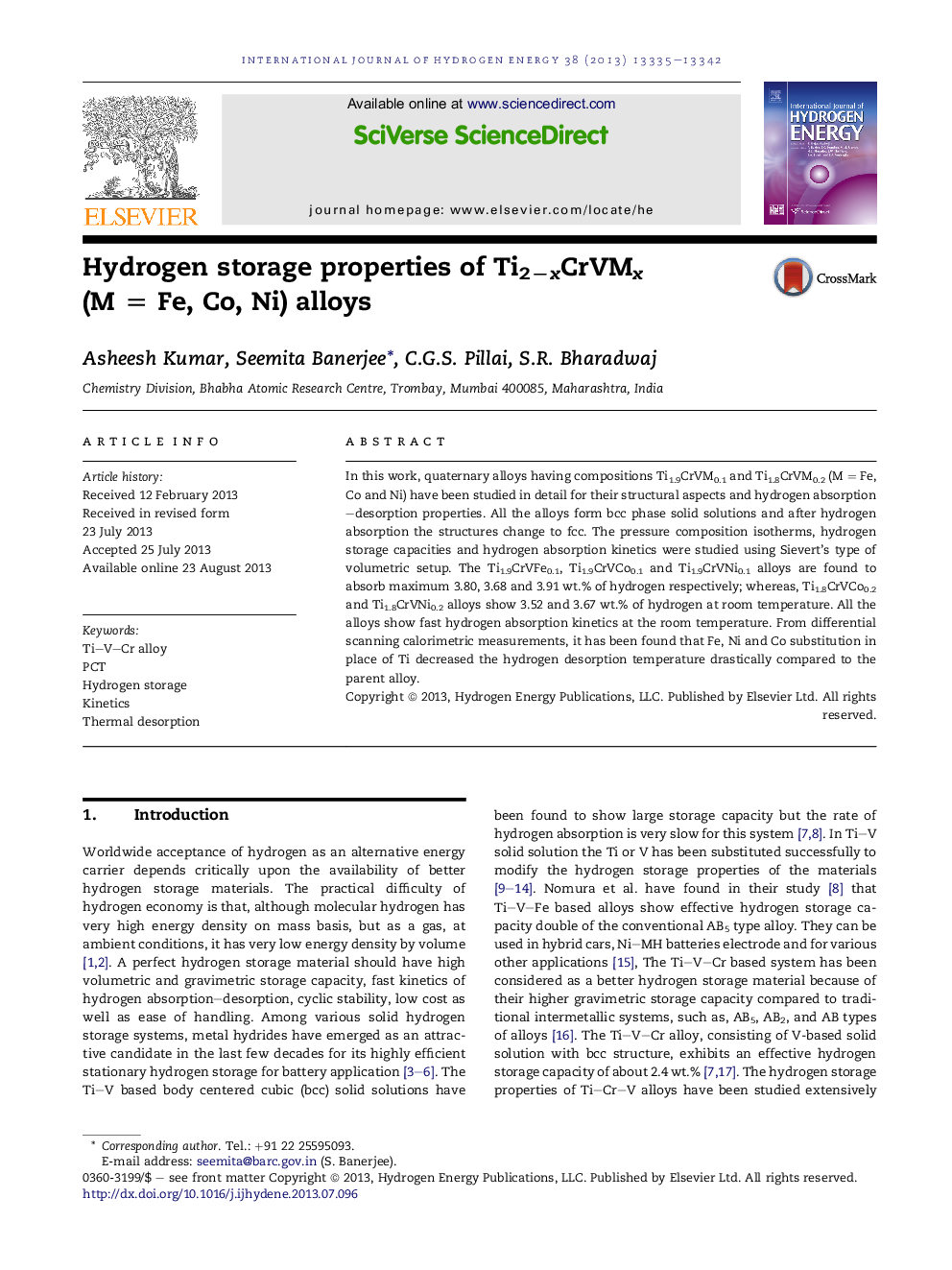| Article ID | Journal | Published Year | Pages | File Type |
|---|---|---|---|---|
| 1273339 | International Journal of Hydrogen Energy | 2013 | 8 Pages |
•Synthesis, structure and hydrogen storage behavior of Fe, Co, Ni substituted Ti2CrV.•The alloys show fast hydrogen absorption kinetics.•Hydrogen absorption capacity of Ti1.8CrVNi0.2 alloy is 3.67 wt.% at 298 K.•The hydrogen desorption temperature decreases with substitution.
In this work, quaternary alloys having compositions Ti1.9CrVM0.1 and Ti1.8CrVM0.2 (M = Fe, Co and Ni) have been studied in detail for their structural aspects and hydrogen absorption–desorption properties. All the alloys form bcc phase solid solutions and after hydrogen absorption the structures change to fcc. The pressure composition isotherms, hydrogen storage capacities and hydrogen absorption kinetics were studied using Sievert's type of volumetric setup. The Ti1.9CrVFe0.1, Ti1.9CrVCo0.1 and Ti1.9CrVNi0.1 alloys are found to absorb maximum 3.80, 3.68 and 3.91 wt.% of hydrogen respectively; whereas, Ti1.8CrVCo0.2 and Ti1.8CrVNi0.2 alloys show 3.52 and 3.67 wt.% of hydrogen at room temperature. All the alloys show fast hydrogen absorption kinetics at the room temperature. From differential scanning calorimetric measurements, it has been found that Fe, Ni and Co substitution in place of Ti decreased the hydrogen desorption temperature drastically compared to the parent alloy.
